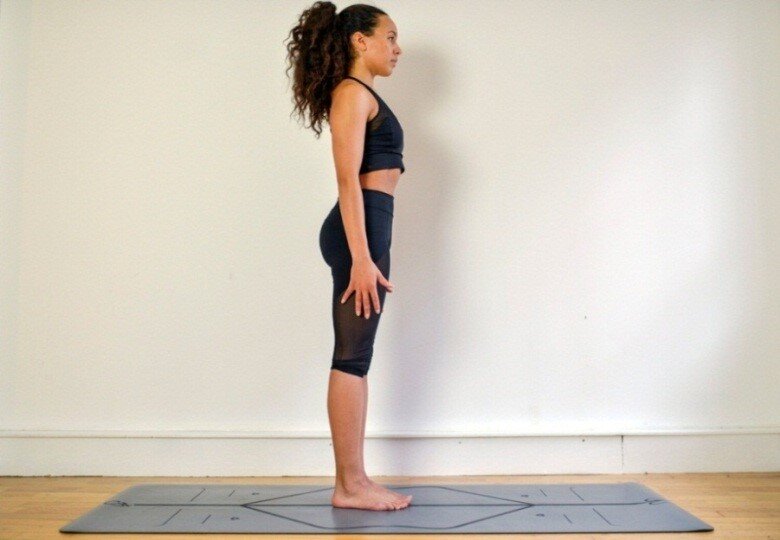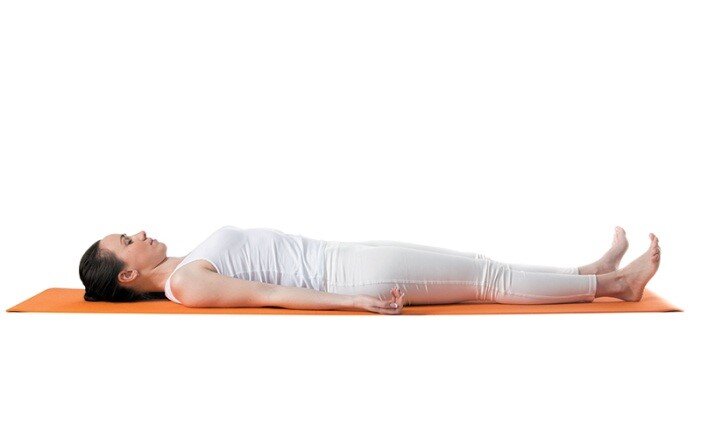“Yoga is the journey of the self, through the self, to the self.” -The Bhagwad Gita
It is true that getting started with yoga for the first time can indeed be a little intimidating as a general perception of yoga is that it comprises only of complex poses and names. Hence as a beginner, this might scare you away. However, once you start enjoying it, there is no looking back. That’s what yoga does to your body.
As a newbie, your trainer will always begin with some easy-to-grasp postures which are short and straightforward. Fortunately, you do not need to learn all the poses at once. Few of the foundational yoga postures are mutually common in position and muscular actions. Once you get a hold of the basic poses, your session moves to the more challenging ones. Also, it is important for you, as a beginner, to be familiar
with the basic asanas (poses) ahead of time, as you will be asked to do those in almost every session.
Here, I have mentioned seven (and the most foundational) yoga postures which I selected for you as a beginner.
Before you begin with your yoga journey, remember that you need to patiently absorb the poses as it helps in healing your mind and body. Listen to what your body demands and always seek the help of your qualified trainers, as they are the ones who could help you in altering the posture to the one that suits your strength and flexibility.
Let’s get started as you lay comfortably on your mat.
Seven Simple Poses for a Beginner:
1. Mountain Pose (Tadasana): As the name suggests, this yoga posture gives firmness, strength, and power to the body. The Mountain Pose is the base for all the standing poses and a must to know as a beginner. Tadasana helps in improving body posture and develops perfect alignment. This yoga posture looks very simple but sometimes, it does become difficult to stand firm and still while upholding a good alignment. In this posture, the dynamics begin with the firm establishment of the feet to build up the balance. The energy, thus, drives up to the legs and thighs from the feet and spreads to the whole body. The spine is properly aligned, shoulders relaxed and head centered in the mountain pose.
2. Easy Pose (Sukasana): Well, this is the classic yoga posture, but unlike the name suggests, it might not always be easy. I term it as the crossed leg and a straight spine pose. Often, the trainers start with this basic pose before moving further to the complex ones. This pose can easily be applied if you are capable enough to sit still for at least five minutes. Sukasana helps the beginners to build up a seated foundation and master the art of meditation and self-reflection. It also supports lengthening and perfect alignment of the spine. This pose has a calming effect on the mind and body and improves one’s concentration.
3. Downward Facing Dog (Adho Mukha Svanasana): This is one of the most widely recognized yoga poses. Trainers use the downward facing dog posture as a switch between poses. It helps in toning, strengthening, and energizing the body. Also considered as an inversion pose, it helps in improving circulation of blood to the head, brain, and the neck; and reinforces the shoulders, arms, and legs. This particular pose can be a little frustrating for you as beginners, but, you will start enjoying it once trained properly.
4. Plank Pose (Kumbhakasana): Planks are commonly seen as a daily exercise which helps in building strength. You learn to balance on your hands while using the entire body as a support system. As a beginner, it is the most preferred pose if you want to tone your abs and develop strength in the upper body. One also learns to use breath strategically while performing the plank pose. Sometimes, even the experienced yoga practitioners find planks very difficult, and for combating this, modification of the pose according to their body and strength can be helpful. Try holding on to this pose for four breaths and you will at once feel the heat building in your chest, arms, and legs.
5. Cat and Cow (Marjaryasana/Bitilasana) : The Cat and Cow pose are the easiest to grasp and practice. When done with precision, this essential pose travels through both flexion and augmentation of the spine. Each movement leaves an individual with calmness and relaxes the body while releasing tension.
Cat Pose (Marjaryasana): This is a delicate backbend that relaxes up the spine, extends the rear of the middle, and delivers pressure in the neck. The pose gets its name from the Sanskrit words Marjari, which means cat, and asana, which means pose.
Cow Pose (Bitilasana): This is a gentle backbend that relaxes up the spine, extends the front of the middle, and delivers strain in the neck. It gets its name from the Sanskrit words Bitila, which means cow, and asana, which means pose.
6. Tree Pose (Vrikshasana): Yet again a wonderful and simple standing pose for tenderfoots to pick up balance, and gain focus and clarity. This pose also teaches one to breathe smoothly while keeping the body balanced on one foot. While standing in the Tree Pose you will feel grounded and strong regardless of whether or not you held your breath for a couple of seconds. Additionally, this a perfect pose to move easily from one posture to other while maintaining balance. As a beginner, it is an extraordinary standing pose to work on, as it connects to your brain, thus leaving you more focused. This pose also helps in developing clarity of mind.
7. Corpse Pose (Savasana): It has been noticed that most of the people begin with yoga to reduce stress, thus in this case, the corpse pose has been considered as one of the best yoga postures that teaches us to relax. The particular name of the asana (corpse pose) is indeed gloomy but the main idea is to forget everything for a while and relax. Relaxing in the corpse pose will permit you to relax more effectively and help you shift rapidly into the other yoga poses and this will ultimately allow you to diminish pressure and strain in your body. It’s a perfect way for practicing meditation for a beginner especially when an individual is generally not used to sitting for long hours. As a beginner, it might hurt your back while laying down flat but your trainer will always help you in modifying it according to the demands of your body.
Some Other Poses:
Of the many yoga poses, I had picked up only seven for you as a beginner. But the following postures are a must to be added in the list for you as a new learner.
· Warrior 1 (Virabhadrasana I)
· Warrior 2 (Virabhadrasana II)
· Bridge Pose (Setu Bandha Sarvangasana)
· Bound Angle Pose (Baddha Konasana)
Always remember:
· To move gradually through each posture, making sure to inhale as you move.
· To pause after postures that are challenging for you, particularly if you experience shortness of breath. In that case, restart when your breathing gets back to normal.
· Hold each pose for a couple of slow breaths before proceeding onward to the following one.
Begin with your love for yoga:
So, once you are firm in your decision to begin your journey with yoga, you, now need to choose the perfect yoga studio led by some expert trainers. Also, in these unprecedented times of COVID-19, you might be skeptic about joining a yoga studio in person. Well, in that case, there are studios that work online with the best of coaches and trainers! With the availability of a good internet connection and smart phone, you can access your online yoga class from anywhere.
Our yoga studio works both ways.
If not now, when? Begin your journey of yoga and trod your path to a better, calmer and healthier version of you!
Nida Zakaria









